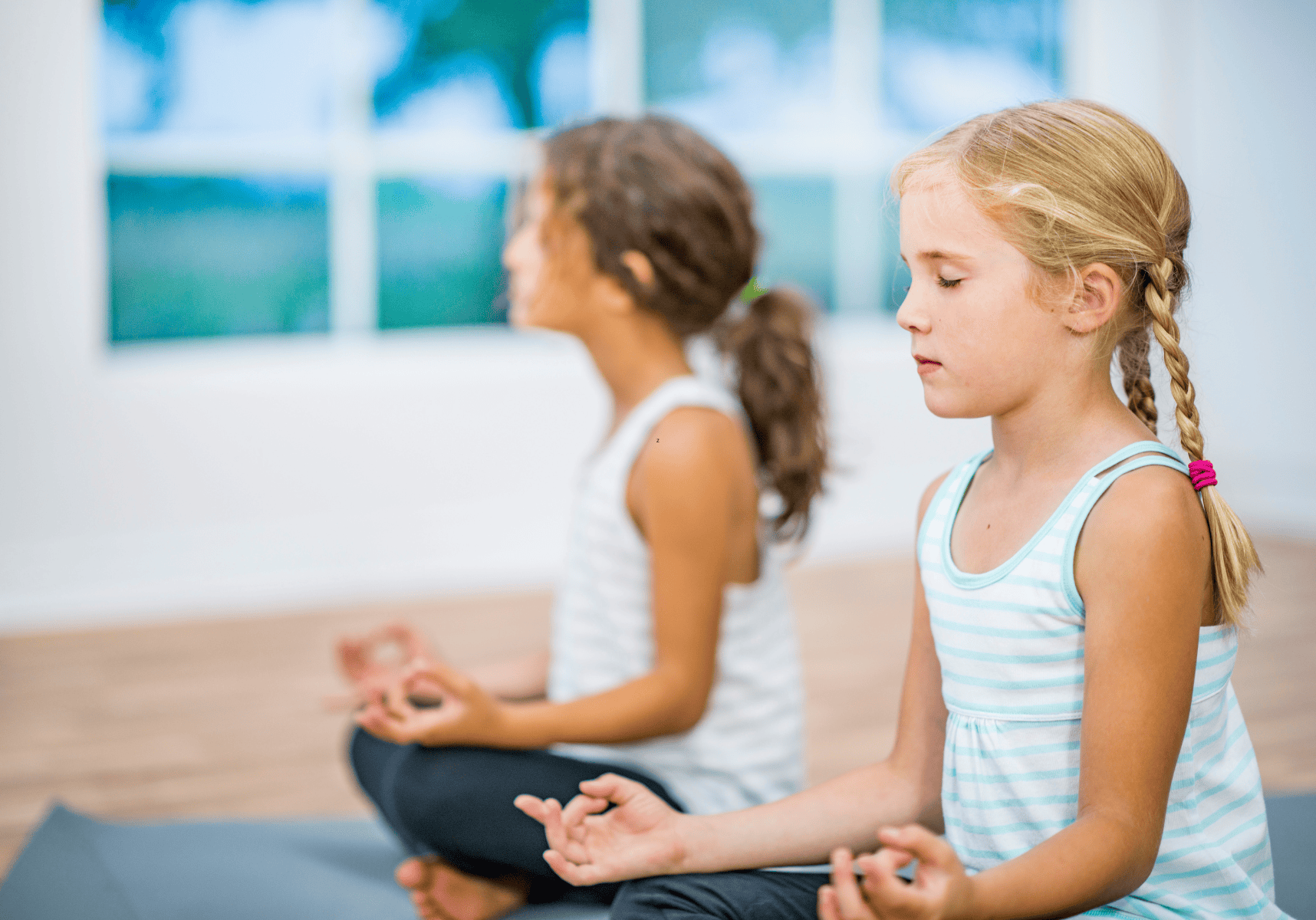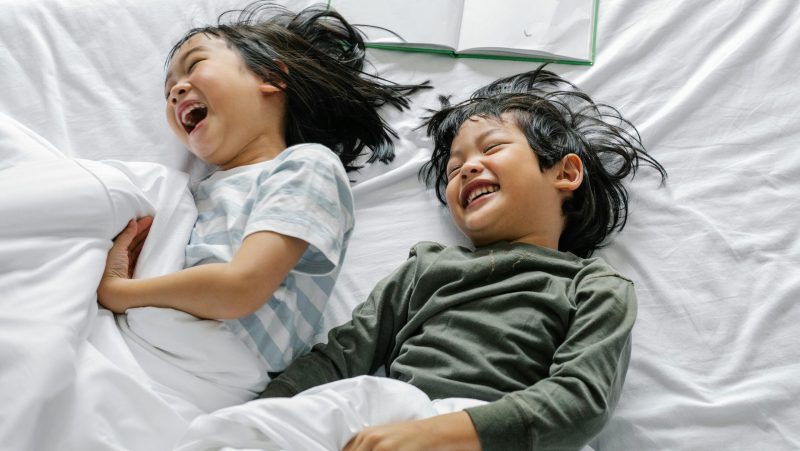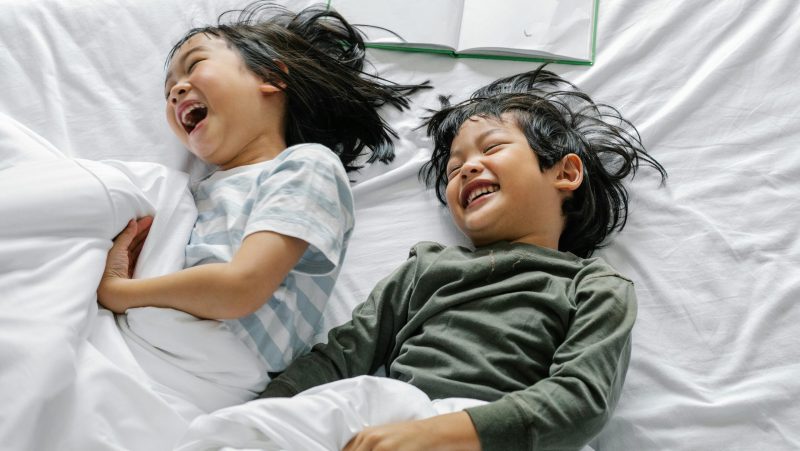
5 Fun Ways to Meditate With Kids
Discover Fun and Creative Ways to Introduce Mindfulness to Your Kids - By Cora Gold
Reading time: 3 minutes
Meditation isn't just for adults anymore! Introducing your little ones to mindfulness can greatly benefit their psychological development, emotional well-being and happiness. When done together as a family, it turns into a special bonding experience. But how do you get fidgety kids to sit still and meditate? Make it fun.
Here are five easy and enjoyable ways to introduce meditation to children*.
1. Mindful Breathing
Start with something simple — breathing exercises. Encourage your child to focus on their breath, breathing through the nose and exhaling slowly through the mouth. This practice helps kids slow down, drawing their attention to the present. It’s an excellent tool for calming down during moments of stress or winding down after a busy day.
Turning breathing exercises into a game to keep children interested — the younger they are, the more creative you need to be. For instance, ask them to imagine their belly as a balloon. As they breathe in deeply, they "inflate the balloon," and when they exhale, the balloon deflates.
Have toddlers and preschoolers invite their favorite stuffed animal to the session. Encourage them to lie on their back and place their toy on their tummy. Ask them to focus on breathing, watching their "buddy" rise and fall with each set.
Not only will this make deep breathing fun, but it also trains kids to slow down and focus on their breath — a vital aspect of mindfulness.
2. Nature Walk Meditation
Outdoor walks are a great way for kids to bond with the natural world and get moving. They also lift the mood and relieve stress and anxiety.
Take them on a quiet stroll and turn it into a mindful nature exploration. Ask them to pay attention to the world around them — the sounds of birds, the feel of the wind, the smell of the flowers.
Encourage them to notice what they see, touch, hear, smell and taste. This grounding exercise is believed to connect children with their senses and the present moment. Plus, the fresh air is always a bonus!
3. Body Scan Meditation
Body scan meditation is a simple yet effective way to train children to become more aware of their bodies and emotions. During this practice, sit or lie down in a comfortable position and close your eyes. Guide them to focus on different body parts, starting from their toes and moving up to their head.
Ask them to notice how each part feels — is it tense, relaxed, warm or cool? Body scans stimulate children to tune into physical sensations, bringing about relaxation and stress relief. This practice is especially useful before bedtime, as it promotes a sense of calm and body awareness that makes it easier for kids to unwind.
4. Movement Meditation
Not all meditation has to be still! Kids love to move, so find ways to incorporate gentle walking or stretches. Yoga is one of the most popular ways to teach children movement meditation.
Find an open space to move and lead young ones to hold and alternate between animal poses like cat, cow or downward dog while concentrating on their breath. Using animals for meditation taps into kids' love for creatures, which motivates them to participate wholeheartedly. You can also ask them to pick an animal they like and imagine moving and breathing like that animal. For example, they can take long, slow breaths to emulate a whale or short, quick breaths like a rabbit.
This activity helps expend stagnant energy, uphold physical fitness, and promote mindfulness. It’s also a way to make meditation accessible for children who struggle to sit still for long periods.
Take advantage of the power of positive affirmations on the young psyche to motivate your child to engage. Have your child repeat positive statements like “I am brave,” “I am kind” or “I can do hard things” to boost confidence in themselves and instill a positive mindset. You can say them together as you gently move about while meditating.
Repeating these statements can become a form of mental meditation that supports their self-esteem. Make it a game by having kids create their own affirmations or taking turns sharing them in a circle.
5. Guided Visualisation
Lead your kids on an imaginary journey to a peaceful place to help them relax, cultivate positive thinking and instill confidence. To practice guided visualisation, sit or lie down in a comfortable position with your child and close your eyes. Using visual triggers, envision a peaceful place together. It could be a magical forest, a sunny beach or a cosy treehouse. Describe the sights, sounds and feelings of this special place in detail, encouraging kids to contribute.
Take slow, deep breaths throughout the process to boost your focus. Doing this regularly enables children to unwind and develop visualisation skills.
Benefits of Meditation for Kids
Introducing meditation to children from a young age can have numerous positive effects, including:
- Improved focus and concentration
- Better emotional regulation
- Reduced anxiety and stress
- Enhanced self-awareness
- Increased empathy and compassion
- Better sleep quality
- Boosted immune system
Make Meditation Fun for Kids
Meditation is a valuable tool that can help kids develop essential life skills. There are many different ways to meditate with children, and experimenting is the best way to find what works for you and your child. Also, be patient and keep practicing, as it takes time to learn how to meditate.
Remember, the key to meditating with kids is to keep it light, fun and age-appropriate. Don't expect perfect stillness or long periods of concentration. Even a few minutes of mindful activity can make a big difference.
*commission earned from this link.





